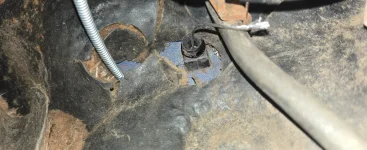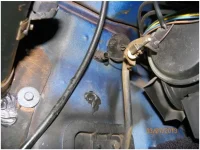Jackhammer0312
Member
- Joined
- Dec 4, 2024
- Messages
- 64
- Reaction score
- 5
- Points
- 8
- Location
- Georgia, USA
- Buick Ownership
- 1971 Buick Skylark 350
Wanted to start a new thread from my old one since the car is running good now, well aside from what's in the title.
I have a 1971 Buick Skylark with a 350 V8. Changed the timing to 22*BTDC on Saturday. Yesterday I went to a job site which is around a 45min drive for me and noticed it was acting weird when I was at a stop and just didn't feel right. Left my indicators on when I got there and needed a jump to get to a gas station a mile down the road. Once at the gas station I needed another jump, but the car took so long to start. After that I pulled into a parking spot to set my GPS, went to reverse and stalled. Did that two more times, needing a jump each time, before I let the engine idle for about 6mins to warm up, then went home. Each time I had to jump it it took a long time to start.
Once I got home I started messing with stuff trying to see why it started running so rough. Found out with a timing light that my distributor had retarded itself 4*! Went from 22*BTDC to 18! Now my balancer could be off, but the engine for some reason loves 22-25*. Anything below that and it starts having problems when in gear at a stop and stalls very easily when not fully warmed up.
Now my main question is: can i fix this or should I get a new distributor? If so, do I go with electronic ignition (ie pertronix) or points? My current distributor is points and I don't mind messing with it and maintaining it.
Also anything carb related and fuel delivery related is completely fine, so I know it 100% has nothing to do with that.
Any and all help is greatly appreciated. I'd rather not change the timing every 4 days!
I have a 1971 Buick Skylark with a 350 V8. Changed the timing to 22*BTDC on Saturday. Yesterday I went to a job site which is around a 45min drive for me and noticed it was acting weird when I was at a stop and just didn't feel right. Left my indicators on when I got there and needed a jump to get to a gas station a mile down the road. Once at the gas station I needed another jump, but the car took so long to start. After that I pulled into a parking spot to set my GPS, went to reverse and stalled. Did that two more times, needing a jump each time, before I let the engine idle for about 6mins to warm up, then went home. Each time I had to jump it it took a long time to start.
Once I got home I started messing with stuff trying to see why it started running so rough. Found out with a timing light that my distributor had retarded itself 4*! Went from 22*BTDC to 18! Now my balancer could be off, but the engine for some reason loves 22-25*. Anything below that and it starts having problems when in gear at a stop and stalls very easily when not fully warmed up.
Now my main question is: can i fix this or should I get a new distributor? If so, do I go with electronic ignition (ie pertronix) or points? My current distributor is points and I don't mind messing with it and maintaining it.
Also anything carb related and fuel delivery related is completely fine, so I know it 100% has nothing to do with that.
Any and all help is greatly appreciated. I'd rather not change the timing every 4 days!


